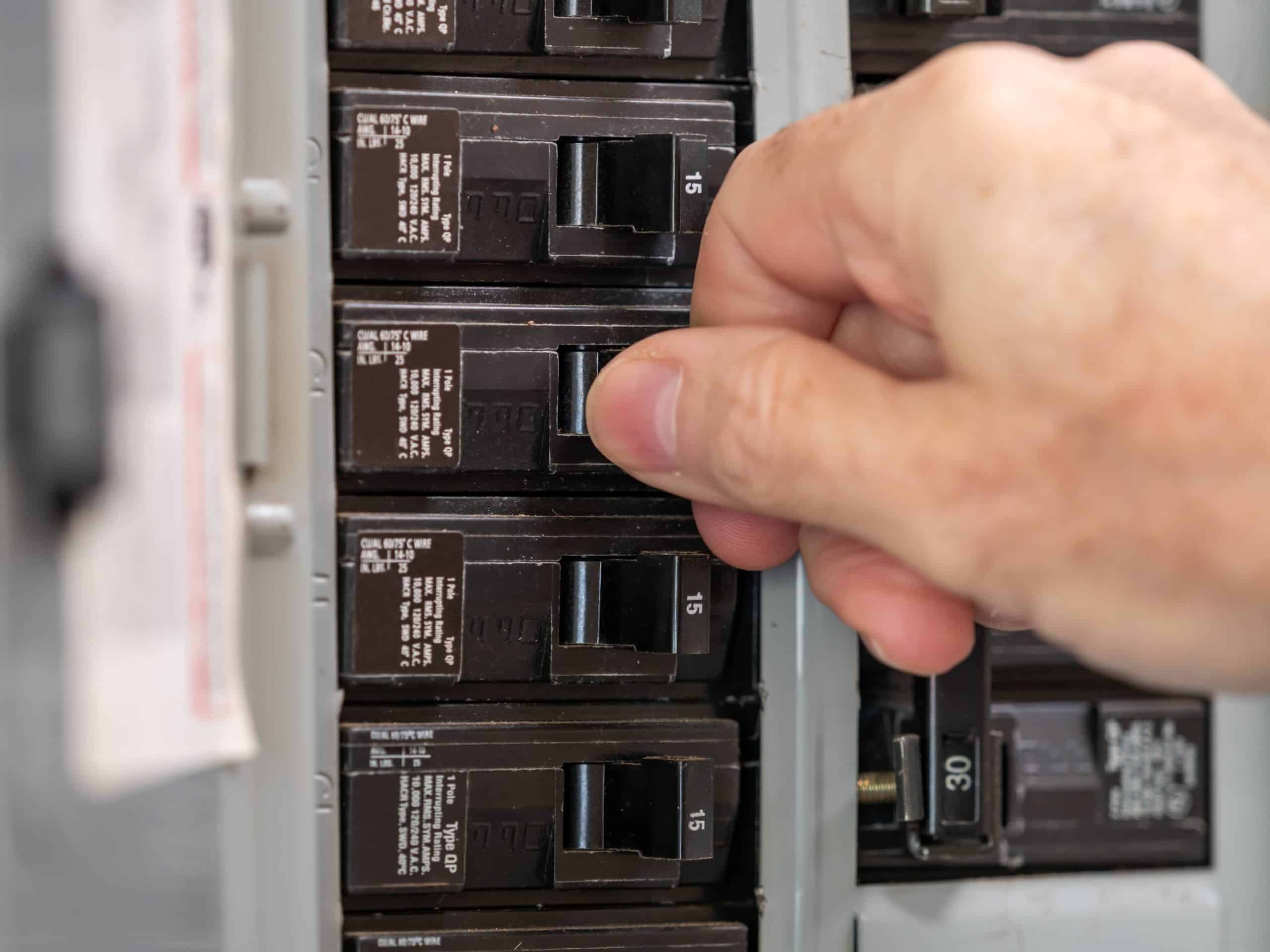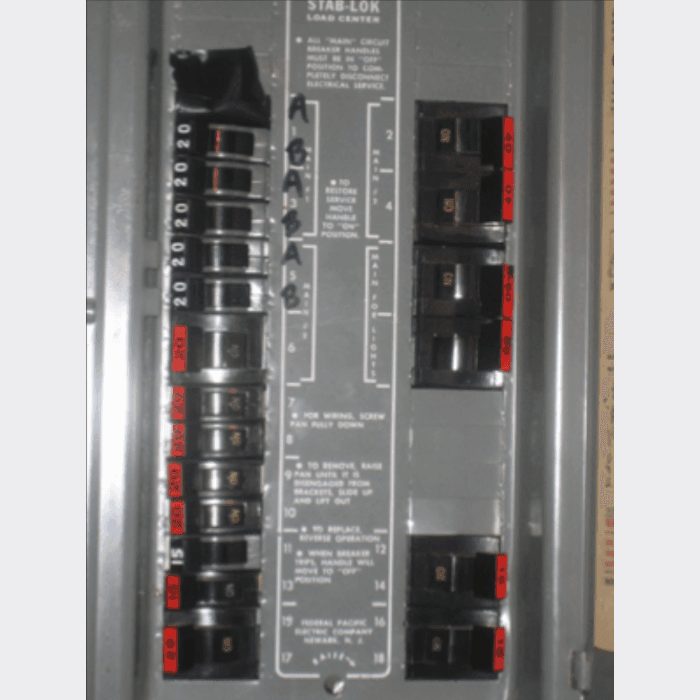
A circuit breaker controls everything on the circuit inside the electrical panel in the house. From appliances to lamps, to light fixtures etc. However, just like with anything, circuit breakers can go bad. If you can catch this early, it may not be so expensive.
How can you tell if a circuit breaker is bad? Well, the breaker doesn’t remain in the “reset” mode, there is a burning smell from the electrical panel box, it is hot to touch, there is physical damage, it trips frequently, or it is just plain old to name a few.
Let’s take a look at why this is important, the key indicators listed above to see what can cause this to happen, other areas of concern, recalls, the importance of taking care of it right away, and also when to call a professional for help.
Why This is Important
As mentioned above, a circuit breaker is inside the electrical panel box that controls everything in the house. This includes the appliances, lamps, lights, router for the computer, garage door, etc. The breakers must be always functioning properly and safely.

Key Indicators to Tell if You Have a Bad Circuit Breaker
1. Breaker Doesn’t Stay in “Reset” Mode
It is possible the breaker is short-circuiting, but call an electrical professional to check it out. Importantly, you want them to examine more closely the inside of the unit and walls to make sure there are no other dangerous issues going on.
2. Burning smell
If you smell something burning coming from the electrical panel box, then something is malfunctioning. Immediately, shut off the main power to the house and call a professional right away for emergency service. This could lead to the start of a fire in the home.
3. Hot to the touch
If you find the circuit breaker (or the electrical panel box) is hot to the touch, turn off the power to the house and call a professional for emergency service right away.
Additionally, it might not be just the electrical panel box that gets hot, but also a dimmer switch in the home. If you find this is also happening, you will need to explore the amount of wattage that can be held and what the wattage is that is plugged in.
4. Visible damage to the box or outlets
Do you notice scorch marks near outlets, appliances, or the circuit box? If yes, shut the power off to the house and call the electrical professional for emergency service. This means a wire has melted and the home could be on fire shortly.
Thermal imaging can also find the source of the heat. The FLIR camera can show where heat is escaping in the home. With an infrared camera, the source of the heat can be found and help inspectors know where the issue is. As we can’t see behind walls, this adds the views that are needed.
5. Breaker trips frequently
If you find that every time you turn on the switch in a particular area, the breaker turns off then it could be a bad breaker or you need an additional circuit added. Contacting an electrician is a smart idea so they can diagnose the issue.
6. Old Age
Depending on the age of the home or the circuit breakers, they may need replacing and upgrading. They are designed to work for decades but sometimes do wear out faster. Calling a professional to diagnose the issue and age is a good idea.

Other Areas of Concern
FPE Panels
Federal Pacific Panels, or FPE panels, were put into many homes between the 1950s and 1980s. Stab-Lok is another name for them. Materials used to make them were inadequate and could lead to fires.
If you have a home built during this time, or looking to purchase one, keep in mind that insurance companies will not insure these panels. You can identify a Federal Pacific Panel by looking for the following: Red Tipped Breakers, “FPE” lettering, the words “Federal Pacific Electric Company” or the words “Stab-Lok.”
How to Tell if the Circuit Breaker is Bad
- Identify the breaker first.
- Go to the electrical panel box and look for the label for the breaker that isn’t functioning correctly.
- Make sure it is the correct label matching the correct circuit.
- Then, put that breaker in the off position.
- Unplug and disconnect everything in your house associated with that breaker.
- Reset the breaker by pushing it into the “on” position and see what it does.
- Does the breaker trip when you plug all the appliances back in that room? Then this means there is either a short circuit or an electrical overload on the circuit.
Check if Your Breaker Has Been Recalled

Recall of Challenger GFCI Breakers
Homes built after 1988 may have GFCI breakers and these have been recalled. These breakers are usually near water sources in a home such as laundry rooms, kitchens, and bathrooms. They help prevent electric shock. However, homes in 1988 and after may have Challenger GFCI breakers, and they may not “trip” if there is a power overload. Unfortunately, they can cause an electrical overload.
You will want to look to make sure the home you are thinking about buying doesn’t have this. In addition, if you find this is too cumbersome or it does not work, please reach out to a professional.
Importance of Taking Care of the Bad Circuit Breaker and Issue Right Away
You never know if you have a potential fire hazard lurking in the walls or the electrical panel box where you can’t see what is happening. Not only is it important to make any issues you see a priority, but also messing around with electricity is no joke.

Source: Amazon
Digital Multimeter to Test Voltage and Current
Another way is to use a digital multimeter. This is a handheld machine that can test the voltage and current through electrical components. You can buy this on Amazon or at a local hardware store.
To use the Digital Multimeter
- Turn off and unplug everything that is connecting to the breaker you want to test.
- Take the panel off the electrical box by unscrewing the screws with a Philips or a flat head screwdriver. Put the screws in a safe place as you will need these later.
- Then, turn on the digital multimeter by making sure that the black wire is plugged into the spot that says COM or Common. The red wire should be plugged into the one that has the letter “V” and the horseshoe symbol. Note: Depending on the type of digital multimeter you buy, the directions may vary slightly.
- Plugging them in this way will ensure you are testing the voltage of the breaker.
- Hold the red probe to the screw on the breaker. Make sure you are not touching the exposed metal, but the metal is the part touching the screw.
- Black probe to the white neutral bar- check to see where the wires leading out are attached and place the black probe on the neutral bar.
- Double pole breaker- reads between 220-250. If it is reading at 120 V then it is only at half power and needs fixing.
- Single pole breaker– should read at 120 V. If it is 0, then it needs to be replacing.
How to Tell if You Have a Bad Double Pole Circuit Breaker or Single Pole Breaker
Double Pole Breaker
This breaker is double in the size and takes up two slots in the electrical panel box and are 240 V.
Single Pole Breaker
This breaker is smaller in size and only has one slot in the electrical panel box and are 120 V.
Replacing a Circuit Breaker That You Can Tell is Bad
Now that you have found the circuit breaker that needs replacing, you can do it yourself or call an electrician.
If you decide to do it yourself:
- Make note of the brand of the electrical panel or the approved brand(s) as you want to get one that is the same brand. Check the inside label of the electrical panel for approved circuit breakers. This is very important.
- Next, go to the hardware store (or order online) and find the breaker for the voltage you need. The good thing is they are pretty cheap at $5-10 each.
- Then, turn the breaker off to stop the electrical current.
- Use needle-nosed pliers with a rubber insulated handle, this will help avoid electric shock. You will loosen the terminal screw and get the wires out. The pliers will pull the wires out from the terminal.
- Find the breaker that needs replacing and use your fingers to pull up on it to get it out of the locked place.
- Slide the clips of the new breaker in and make sure that the breaker is in the off position.
- While holding the pliers, use the pliers to hold the wires so you can tighten the terminal screw.
- Lastly, turn your breaker on and reattach the panel.
When to Contact a Professional to Tell if you Have a Bad Circuit Breaker
Especially important is to contact a professional if you are having any of the issues above or the warning signs if you don’t want to take care of it yourself. Without a doubt, electricity is dangerous and you risk shock, electrocution, and even injury or death. Certified and trained professionals are experts in these areas and are here to help.
Conclusion
Finally, circuit breakers tripping are annoying but it is important to find out the cause. However, if you take a look at the areas mentioned above, you may be able to find out the culprit and not spend a lot of money.
However, if the electrical panel box is old or there is malfunctioning, a replacement will probably be needed. Have questions about your electrical panel box or any of your circuit breakers? Leave us a note below so we can help!



